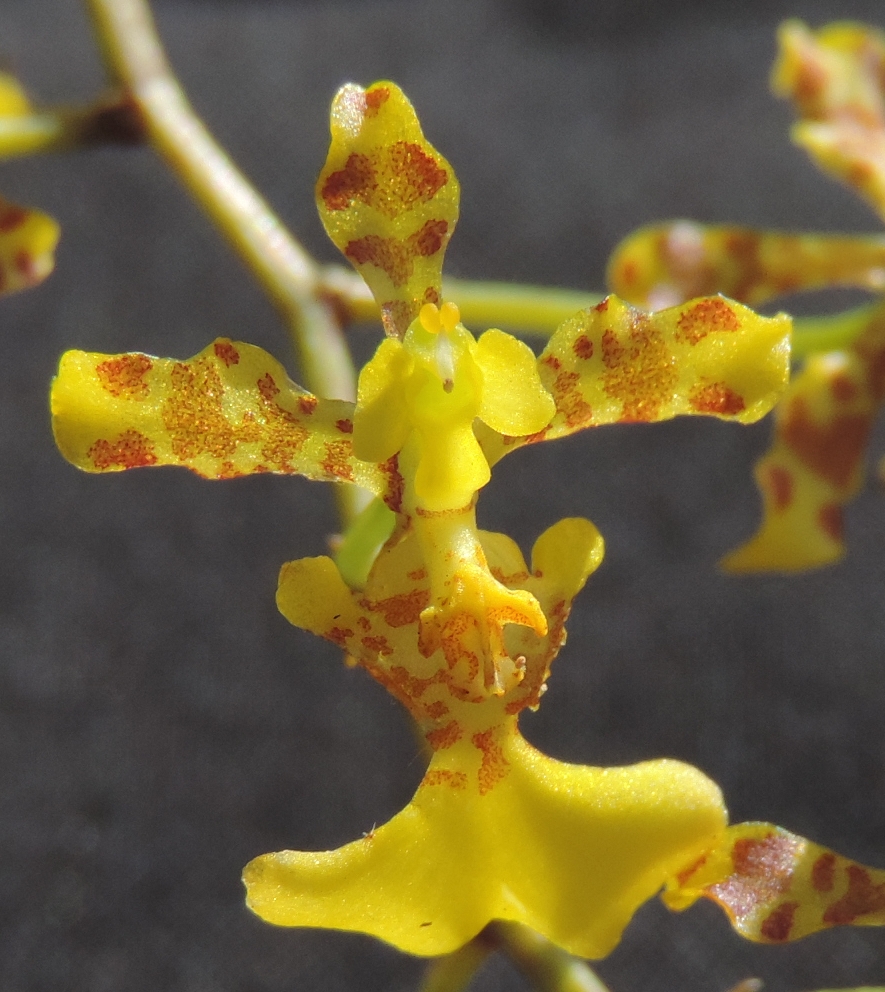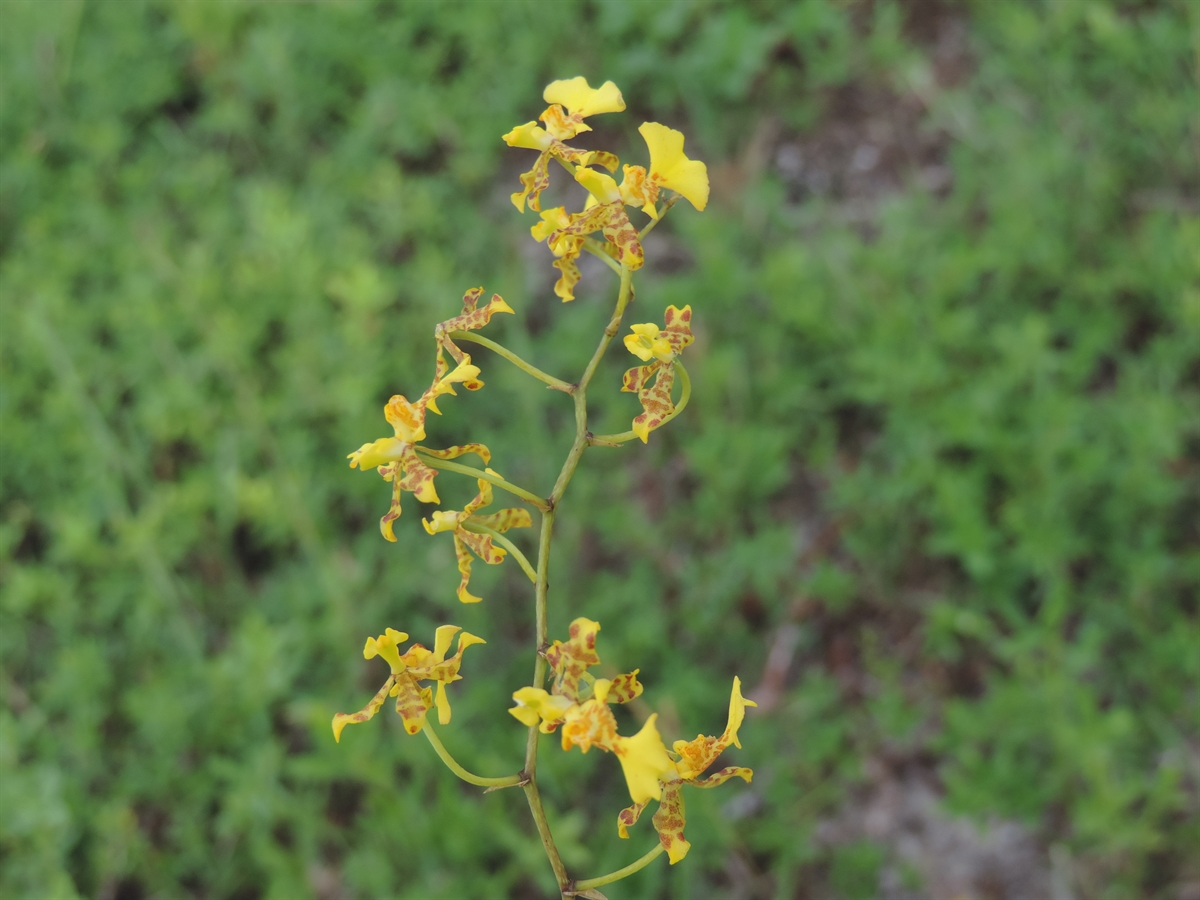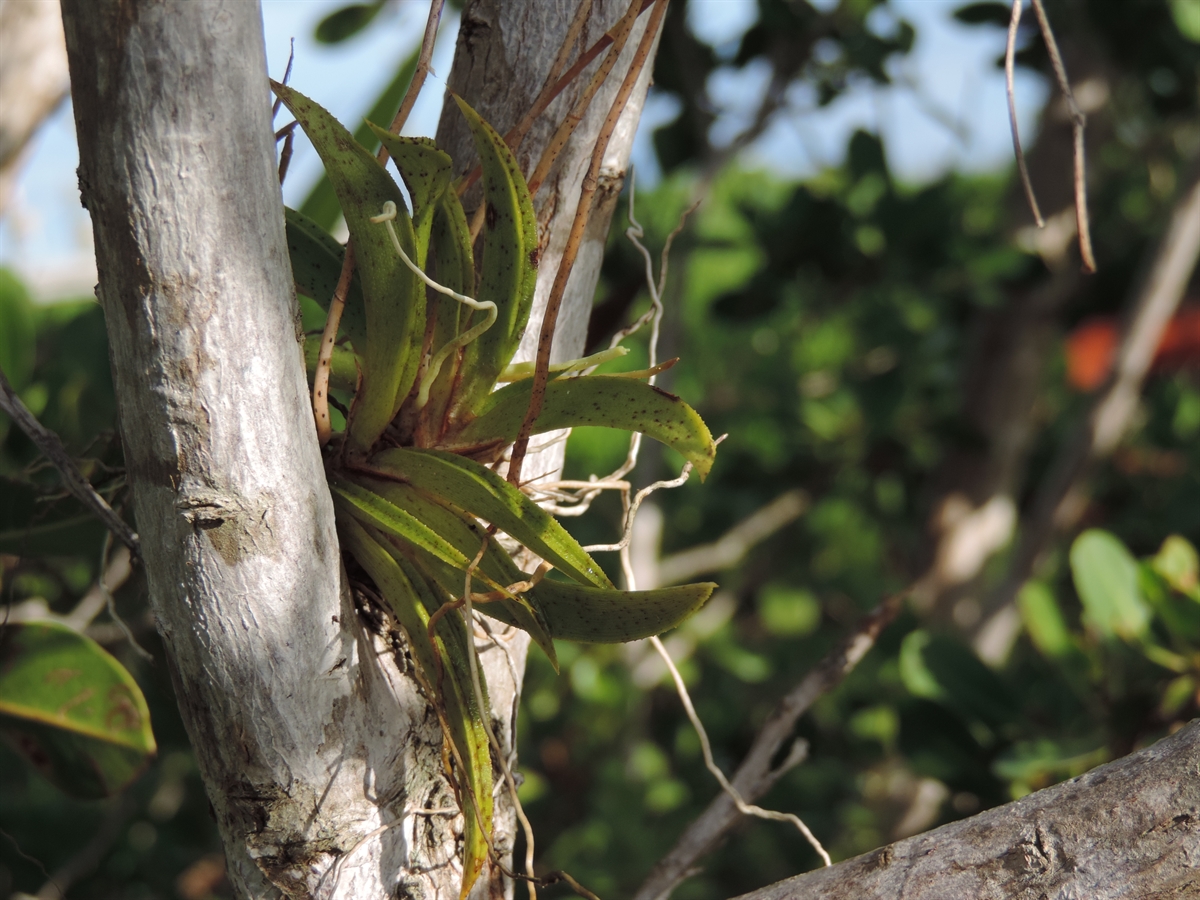Habit: Tolumnia sasseri grows as a rhizomatous epiphyte. There is a shortened primary stem that is incased by imbricating sheaths. There is a secondary stem forming a pseudobulb that is short, to 5 mm, and enclosed by distichously arranged leaf bases. The leaves are arranged 2-ranked, plicate, recurved linear, to 8 cm in length (usually smaller) and 1 cm wide, typically yellow green with red spots and a crenate leaf margin and acute leaf apex.
The complete, perfect, zygomorphic flowers are arranged in terminal racemes (with occasional branching) up to 60 cm in height (usually shorter) with up to 60 flowers (usually less). A small bract subtends each flower. The calyx has 3, yellow with brown spots, sepals. The corolla has 3 petals with one forming the labellum. The labellum is 3 lobed and yellow. The lateral lobes yellow with brown spots, entire or crenate reflexed margins and the mid lobe is entire or crenate with brown and pink spots The column has yellow lateral wings at the apex and is crenate. The fruit is a capsule at maturity.
Habitat: Tolumnia sasseri grows in Dry Broadleaf Evergreen Formation – Forests as well as near Mangrove areas.
Distribution: Tolumnia sasseri is endemic to the Lucayan Archipelago occurring on Abaco, Grand Bahama and New Providence.
Medicinal/Cultural/Economic usage: Tolumnia sasseri is not known to be used medicinally in the Lucayan Archipelago.


